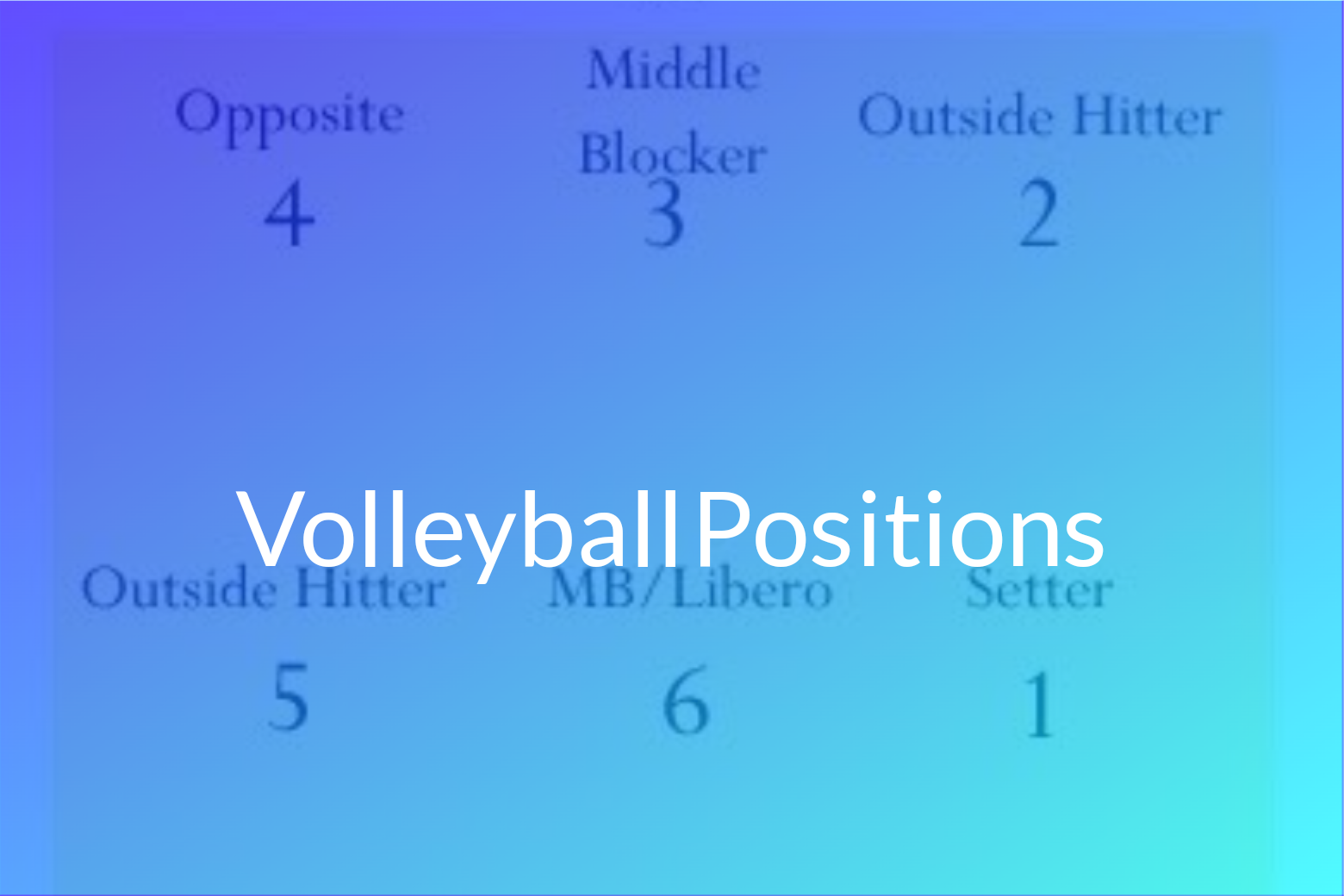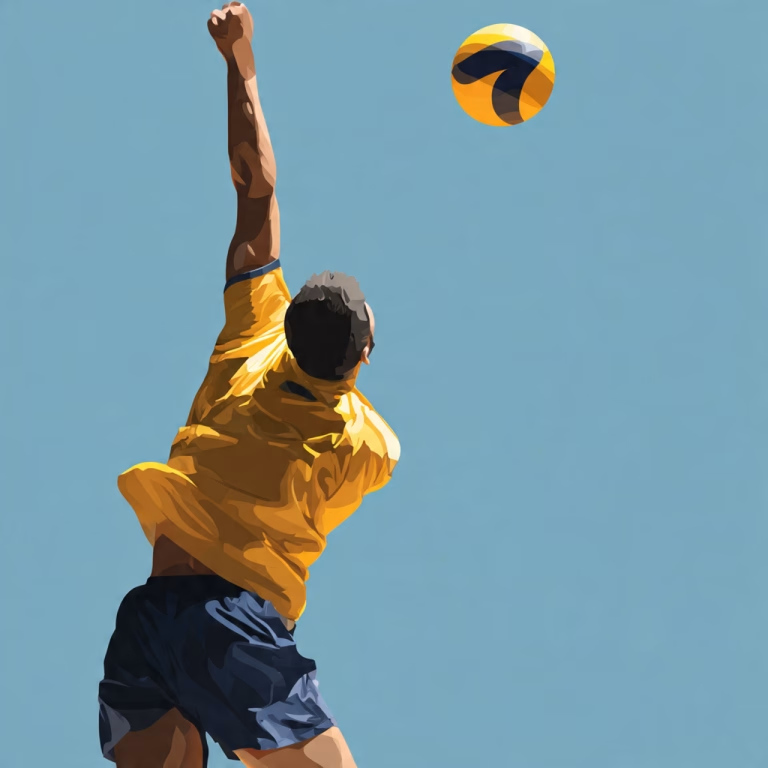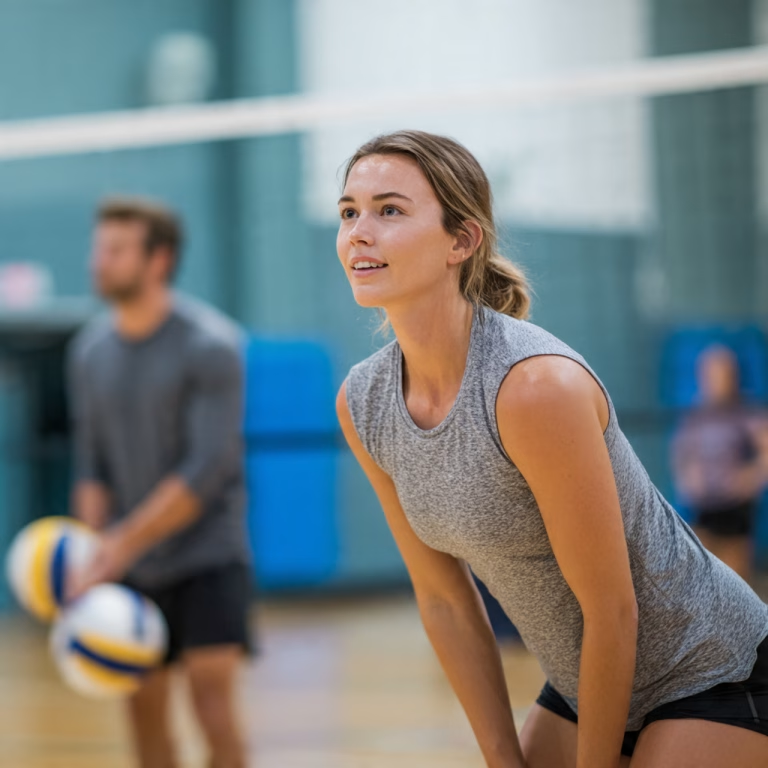Here we will provide the ultimate guide to volleyball positions and their corresponding duties.
Volleyball is a dynamic and thrilling sport that has specific positions for each player, known as volleyball positions.
Each player on the court has their own position and set of responsibilities that contribute to the team’s overall success.
Understanding the different volleyball positions and their corresponding duties is crucial for both players and spectators alike.
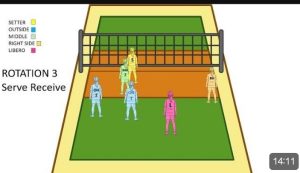
In this comprehensive guide, we’ll look into six (6) volleyball positions, exploring the unique roles and responsibilities of each player positions.
Whether you’re a pro or a beginner to the sport, this article will provide you with a deep understanding of volleyball positions and how the team functions as a cohesive unit, enabling you to appreciate the game on a whole new level.
See Also:
- Blaire Fleming Allegedly Hid Gender Identity: Here is Why
- Discover Volleyball Injuries: Prevention and Recovery Strategies
- Volleyball Nutrition – Best Foods and Eating Habits for Players
- Merritt Beason: Bio, age, height, stats, and career highlights
- Hayden Kubik: Bio Age, Height, Stats, and Career Highlights 2024
- 2024 NCAA men’s volleyball championship Schedule and How to watch the Selection Show
- Harper Murray: Bio, Age, Stats, Net Worth, and Career Highlight 2024
First, let’s look at what volleyball positions really are!
What is Volleyball Positions
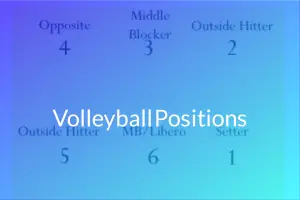
Volleyball positions are designated spots or positions with specific roles that players fulfill on the court during the game. There are six volleyball positions, which are:
- Setter
- Outside Hitter
- Middle Blocker
- Opposite Hitter
- Outside Hitter/defensive specialist
- Libero
They are divided into three categories:
- Offense
- Defense
- Setters.
Each volleyball position is assigned to a specific location on the court, and there are six positions; these spots are fixed and unchanging.
For example, outside hitters normally occupy the left front-row court position, which is known as the 4th spot on the court.
See Also:
- 4 Best Position in Volleyball
- Best Volleyball shoes, Review of different Volleyball shoes 2024
- Volleyball Positions Diagram: Roles and Responsibilities (2024 updated)
Positions in Volleyball
There are six (6) positions in volleyball, each with its own role and responsibilities.
The chart below shows six volleyball positions. From the chart, you will notice that the volleyball court is divided into two by the net.
And on each side of the net, there are six designated positions for volleyball players.
And the six designated volleyball positions are subdivided into two rows with three players each.
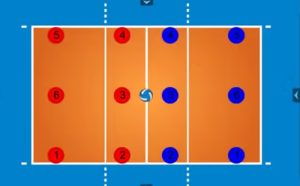
From the chart above: The volleyball positions of any professional volleyball team include:
- Setter (S)
- Outside Hitter (OH)
- Middle Blocker (MB)
- Opposite Hitter (OH)
- Outside Hitter/defensive specialist (DS)
- Libero (L)
1. Setter: 1st Volleyball Positions
The setter is often referred to as the “quarterback” of the volleyball team.
Their primary responsibility is to facilitate the offensive plays by delivering precise and well-timed sets to their teammates.
With exceptional court awareness and decision-making skills, the setter must quickly analyze the opponents team’s defense and determine the most advantageous attack option.
As the mastermind of the offense, the setter’s duties extend beyond just setting the ball.
As a setter, you must also possess excellent communication skills, including guiding your teammates and coordinating your team’s offensive strategies.
Additionally, the setter plays a crucial role in the team’s defensive efforts, often acting as the first line of defense against powerful attacks from the opposing team.
2. Outside Hitter: 2nd Volleyball Positions
The outside hitter position is the primary offensive spots in volleyball.
These players are typically tall, athletic, and possess a formidable vertical jump, allowing them to unleash powerful spikes that can overwhelm the opposing team’s defense.
Outside hitters are positioned on the left and right sides of the court, and their primary responsibility is to score points by executing successful attacks.
However, their duties extend beyond just spiking the ball. They must also be adept at serving, passing, and contributing to the team’s defensive efforts when necessary.
3. Middle Blocker: 3rd Volleyball Positions
The middle blocker is the defensive anchor of the volleyball team.
Their primary responsibility is to block the opponents team’s attacks, creating a formidable wall at the net. With their exceptional vertical reach and timing, middle blockers must anticipate the opposing team’s offensive strategies and position themselves accordingly.
In addition to their blocking duties, middle blockers also play a crucial role in the team’s offensive efforts. They often execute quick attacks or slides, catching the opposing defense off guard and creating scoring opportunities for their team.
See Also:
- Kayla Simmons: Bio, Age, Height,Stat and Career Highlight.
- Laney Choboy: Bio, Age, Height, Stats and Net Worth 2024
- Tamara Otene: Bio, Age, Height, Stat and Net Worth 2024
- Bianca Bertolino: Bio, Age, Height, Stat and Net Worth 2024
4. Opposite Hitter: 4th Volleyball Positions
The opposite hitter position is on the right side of the court, opposite the setter.
Their primary responsibility is to provide a powerful offensive threat, complementing the outside hitters and creating a well-rounded offensive attack.
In addition to their offensive duties, opposite hitters often contribute to the team’s defensive efforts, particularly in the back row.
They must possess a diverse skill set, including serving, passing, and blocking, to effectively support their team in various game situations.
5. Defensive Specialist/Outside Hitter: 5th Volleyball Position
While not an official position on the court, the defensive specialist plays a crucial role in the team’s success.
These players are often substituted into the game to provide an extra layer of defensive support, particularly in crucial moments or when the team is struggling defensively.
Defensive specialists excel in skills such as digging, passing, and receiving serves.
Their presence on the court can be a game-changer, allowing the team to maintain a solid defensive foundation and create offensive opportunities through their exceptional ball control.
6. Libero: 6th Volleyball Positions
The libero position is a unique position in volleyball, serving as the team’s defensive specialist.
Easily recognizable by the different jersey, the libero’s primary responsibility is to excel in defensive skills such as digging, passing, and receiving serves.
While the libero is not allowed to serve, attack from the front row, or rotate into the front row, their presence on the court is invaluable.
They provide a reliable team’s defensive line, allowing the team’s offensive players to focus on their attacking duties without worrying about defensive lapses.
FAQs
What is the most important position in volleyball?
While all positions are essential for a team’s success, the setter is often considered the most crucial position in volleyball. As the orchestrator of the offense, the setter’s decision-making and ball distribution skills significantly impact the team’s offensive effectiveness.
Can a Player switch Volleyball Positions during a game?
Yes, players can switch positions during a game, although it is not a common practice. This typically occurs when a team needs to adjust their strategy or compensate for an injury or player substitution. However, position switches must be communicated clearly to avoid confusion on the court.
What skills are essential for each volleyball position?
- Setter: Excellent ball-handling skills, court awareness, decision-making, and communication.
- Outside Hitter: Powerful spiking ability, vertical jump, serving, and passing.
- Middle Blocker: Blocking, quick attack execution, and defensive awareness.
- Libero: Exceptional digging, passing, and receiving serve skills.
- Opposite Hitter: Versatile offensive skills, serving, passing, and blocking.
- Defensive Specialist: Outstanding digging, passing, and receiving serve abilities.
How do teams determine player positions?
Player positions are typically determined based on a combination of factors, including physical attributes (height, vertical jump, etc.), skill sets, and team strategy. Coaches evaluate each player’s strengths and weaknesses to assign them to the position where they can contribute most effectively to the team’s success.
Final Take (Conclusion)
Volleyball is a team sport that relies on the seamless coordination and collaboration of players in different positions.
Each position on the court has its unique roles and responsibilities, contributing to the team’s overall offensive and defensive strategies.
Understanding the volleyball positions and the duties associated with each role is essential for players, coaches, and spectators alike.
It provides a deeper appreciation for the intricate dynamics of the game and the specialized skills required to excel in each position.
Whether you’re a pro player or a newcomer to the sport, mastering the roles and responsibilities of each position will not only enhance your understanding of the game but also enable you to develop a more well-rounded skill set and contribute effectively to your team’s success.
Remember, volleyball is a team effort, and each player’s role is equally important in achieving victory on the court.
Embrace the challenges and responsibilities of your position, and strive to continuously improve your skills and teamwork to elevate your team’s performance to new heights.
See Also:
- New Improved Volleyball Tryout Drills – 2024
- Volleyball Hitting Drills – 2024 (New Improved)
- Volleyball Defense Drills 2024: New Improved

